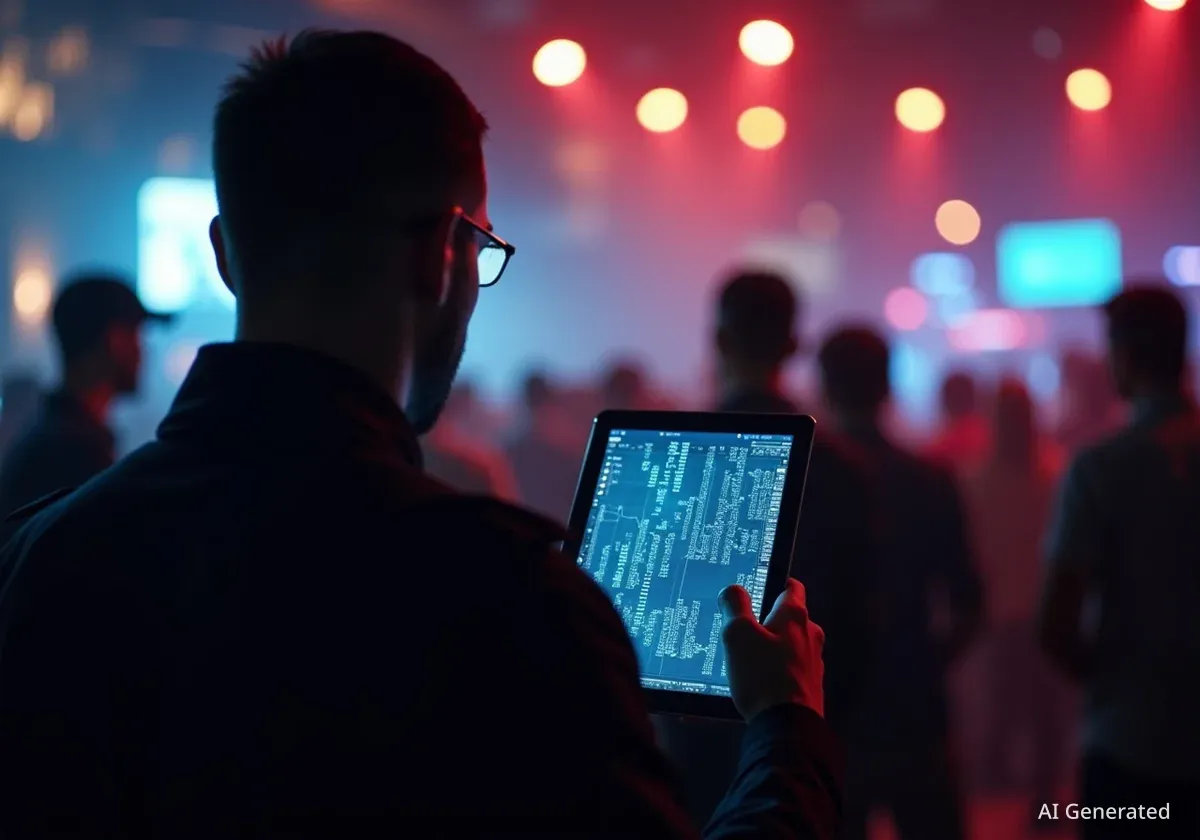Four prominent nightlife venues in Baton Rouge have formed a partnership to implement a new safety initiative powered by artificial intelligence. The system, described as the first of its kind for the city, aims to enhance security by sharing critical safety data across the participating establishments.
This collaborative effort leverages AI technology to identify and flag individuals who have been involved in previous safety incidents at any of the partner venues. The goal is to proactively prevent disturbances and create a safer environment for all patrons and staff in the city's nightlife scene.
Key Takeaways
- Four nightlife venues in Baton Rouge are launching a shared AI-powered security network.
- The system shares data on individuals involved in prior safety incidents across venues.
- The initiative aims to proactively identify potential risks and prevent disturbances.
- Organizers state the technology focuses on behavioral patterns, not personal identification, to address privacy concerns.
- This is the first cross-venue, AI-driven safety program to be implemented in the city's nightlife sector.
A New Approach to Nightlife Security
The new program, tentatively called the Baton Rouge Safe Bar Network, marks a significant shift from traditional, isolated security measures. Instead of each venue managing its own safety protocols independently, the four partners will contribute to and access a centralized, anonymized database.
When an individual is ejected from one of the participating clubs for a serious safety violation, such as aggression or harassment, specific non-identifiable data points are logged into the shared system. This information is then available to the security teams at the other three locations.
The core of the technology is an AI algorithm that analyzes behavioral data. It is designed to flag potential risks without storing sensitive personal information like names or government-issued ID numbers, a point organizers have emphasized to address potential privacy issues.
How the AI System Functions
The system operates on a simple but effective principle of shared awareness. According to a technical brief provided by the organizers, the process involves several key steps:
- Incident Logging: When security staff at a partner venue remove a patron for a significant safety breach, they log the incident into a secure application. The entry includes a description of the behavior and an anonymized profile marker.
- AI Analysis: The AI processes the incident report, focusing on the pattern of behavior rather than the individual's identity. It cross-references this with any previous incidents logged at other partner venues that match the anonymized marker.
- Network Alert: If a flagged individual attempts to enter another participating venue on the same night or in the near future, the system sends a discreet alert to the security team at that location.
- Discretionary Action: The alert provides context about the previous incident, allowing the security staff to make an informed decision. They may choose to deny entry or monitor the individual more closely, depending on the venue's policy and the severity of the past behavior.
The Need for Enhanced Safety Measures
The initiative comes as cities across the country explore new ways to ensure safety in entertainment districts. Urban nightlife economies are vital to local culture and revenue, but they also present unique security challenges. Collaborative efforts like this one in Baton Rouge reflect a growing trend of using technology to create safer public spaces without compromising the patron experience.
Participating Venues and Goals
While the names of the four specific venues have not been publicly released pending the full launch, they are described as popular establishments within the city's main entertainment districts. The partnership represents a proactive step by business owners to self-regulate and improve the overall reputation of Baton Rouge's nightlife.
A spokesperson for the group stated that the primary objective is deterrence. The knowledge that disruptive behavior at one venue could lead to restricted access at others is expected to discourage potential troublemakers.
"Our goal is not to be punitive, but to be preventative," the spokesperson explained. "We want everyone who comes out to enjoy our city's nightlife to feel safe. This network allows us to work together to ensure that a small number of disruptive individuals don't spoil the experience for everyone else."
The organizers hope that this initial pilot program will prove successful and encourage more local venues to join the network in the future, creating a city-wide standard for nightlife safety.
Addressing Privacy and Fairness
The use of AI and data sharing in a public setting naturally raises questions about privacy and potential bias. The creators of the Baton Rouge initiative have been vocal about the safeguards built into the system to protect patron privacy.
They stress that the system is designed to be behavior-focused, not identity-focused. No facial recognition technology is used, and the system does not store names, photos, or contact information. The data shared is limited to anonymized identifiers and descriptions of specific actions that violated venue safety policies.
Safeguards and Protocols
To ensure fairness and prevent misuse, the network operates under a strict set of protocols:
- Clear Criteria: Only specific, serious offenses (e.g., physical altercations, harassment, vandalism) can be logged. Minor infractions are not included.
- Anonymized Data: The system uses encrypted, non-identifiable markers to track incidents, protecting the personal identity of patrons.
- Temporary Flags: Flags on an individual are not permanent. They are designed to expire after a set period, preventing long-term blacklisting for a single incident.
- Human Oversight: Every alert is reviewed by a human security professional who makes the final decision. The AI provides information, but it does not make autonomous decisions to ban patrons.
By focusing on these ethical considerations, the partner venues aim to build a system that enhances safety while respecting the rights of their customers. The success of this balance will be critical to the program's long-term viability and expansion.





